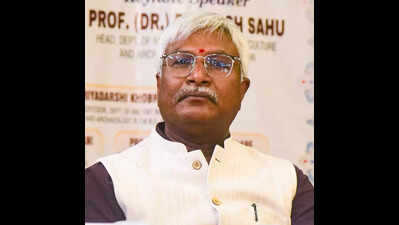Nagpur: Persia, present day Iran, and Bharatvarsha share prehistoric associations, with numerous similarities evident in ancient scriptures, said Prabash Sahu, head of postgraduate department of Ancient Indian History, Culture and Archaeology (AIHCA) of Nagpur University, in his keynote address during a one-day conference on Saturday.
Drawing parallels between Vedas and Avesta, Sahu explained the prehistoric connections between India and Iran during his address, substantiating his discourse with numerous textual references. The conference, ‘Indo-Iran Connections: Cultural and Historical Interactions through the Ages’, was held in the Independence Hall at Vasantrao Naik Govt Institute of Arts and Social Sciences. Mohammad Reza Fazel, director, Culture House of the Islamic Republic of Iran in Mumbai, was the chief guest.
“The diplomatic relation between the Republic of India and the Islamic Republic of Iran was established on March 15, 1950. But, if we look at the relations between ancient India (Bharatvarsha) and ancient Iran (Persia), this tie dates back millennia. Both countries have a prehistoric past. During the Neolithic period, the early domestication of plants and animals, which laid the foundation of civilisation, began in the Fertile Crescent (western Asia region),” he said.
The close relations between the countries in ancient times are reflected in many spheres like art, architecture, literature, religions, customs, trade, and commerce, he said. “India and Iran epitomise two of Earth’s most venerable civilisations, their profound cultural bonds traceable to Indo-Aryan civilisational origins,” Sahu said. “These sovereign nations harbour distinctive cultural, linguistic, and religious attributes that have substantially augmented human civilisation,” he said.
The Indian Subcontinent and Iranian Plateau, geographically contiguous regions, have historical connections spanning millennia, he stated. “The expansive Indian Subcontinent, historically recognised as Bharatvarsha, is demarcated by the Himalayas northward and oceanic waters southward. The Achaemenid Persians initially designated this region, watered by the Sindhu, as Hidhu (in the Behistun Inscription) or Hendu (in the Vendidad). The Hapta-Hindu or Sapta-Sindhu of the Zend Avesta signifies the seven watercourses of Saraswati, encompassing the Ganges and Yamuna,” he said.
Sahu said a short, cursory glimpse into the cultural similarities between the two countries proves that the cultural similarities have continued from historic times to the present. “The remnants of the people from Iran and Persia, who came into India and the journeys of the ancient Indians to Persia, during various phases of history, highlight the same,” he said.
“The two lands existed and coexisted through commonness, which has also been reflected in the trade connections during the protohistoric and historical times. The Pahlavas and the Scythians have left considerable influence on the land of India, in turn boosting trade contacts between the two countries,” he said.

Prehistoric connection between Persia, Bharatvarsha, says NU prof | Nagpur News
- 22.02.2025
